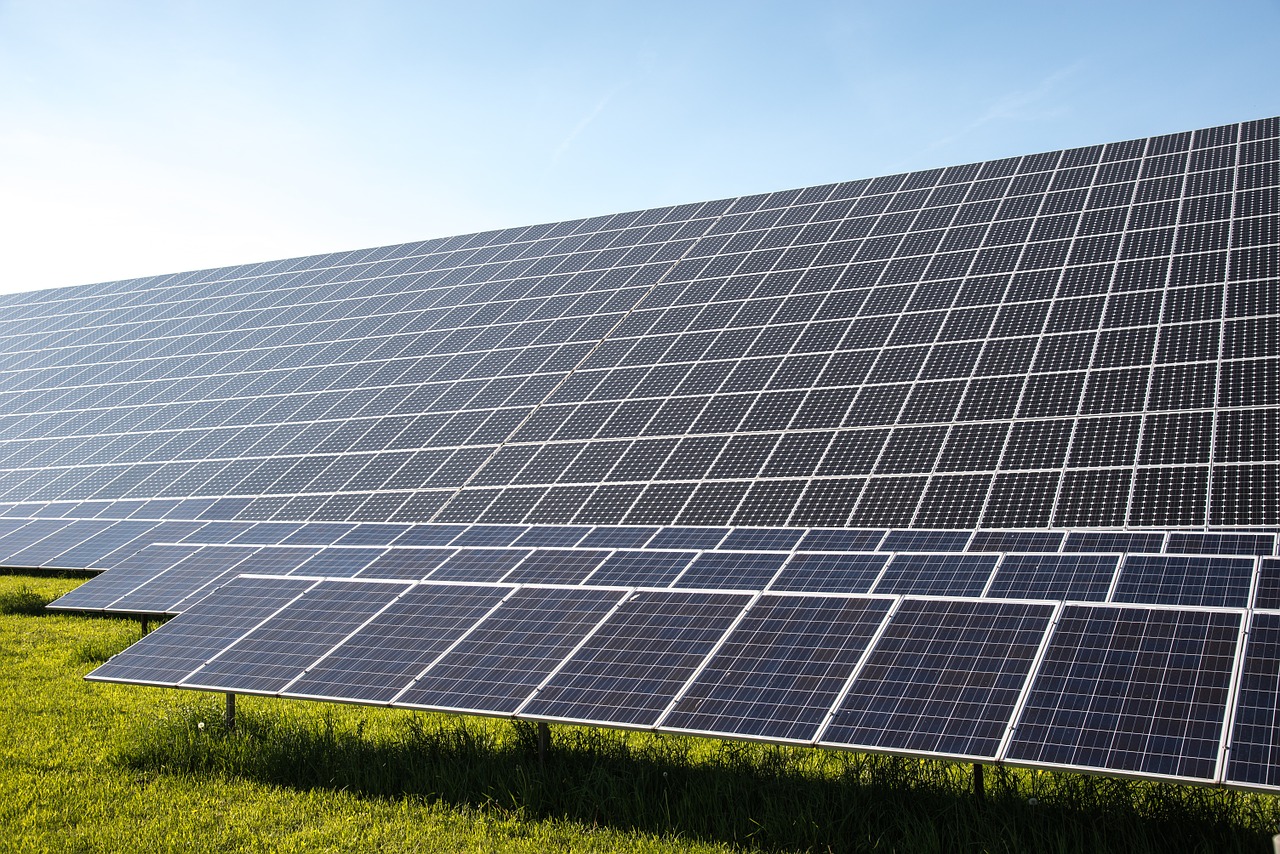
On Thursday (28 May) afternoon, the biggest solar farm in the UK, Cleve Hill Solar Park, was approved, in what is being lauded by many as an important milestone for the industry.
The decision was made by Alok Sharma, secretary of state for business, energy and industrial strategy (BEIS) following a three month consultation of the recommendations given by the Planning Inspectorate, which were submitted in late February. The approval of such - which was the most recent stage in a two year consultation period and an 18 month determination period within which there was a six month examination period - will allow the 350MW solar park to progress to the next stage.
Cleve Hill Solar Park, which will be located just one mile northeast of Faversham, in Kent, situated close to the village of Graveney, is being developed as part of a joint venture between Hive Energy and Wirsol, and is expected to cost £450 million.
Giles Redpath, CEO of Hive Energy, welcomed the decision, saying: "We are proud to lead the way, together with our partners at Wirsol, to deliver the UK's largest solar park. Due to be operational by 2022, the Cleve Hill Solar Park offers a real solution to our urgent climate needs and showcases the potential for the UK to lead the green recovery".
The park will be the first in the UK to be designated as Nationally Significant, due to the sheer scale of it. According to Finlay Colville, head of research at Solar Media, this was key to the project's approval.
“While the 41 page decision letter from BEIS is a rather laborious read, it seems to come down to justification based on 'the national need for renewable energy infrastructure'. So, in principle, this is in full accordance with the whole raison d'etre of any Nationally Significant Infrastructure Project (NISP)."
With the approval, the controversial project can move forward, but some significant details are yet to be revealed.
Financing in the time of COVID-19
Financing will be the next major phase for the project, with Redpath saying they will accelerate conversations the group have already been having to move forward with financing as quickly as possible.
Concern has been raised by many with regards to financing renewable energy projects currently, given the broad reaching impact of COVID-19. A recent report by the International Energy Agency found that there would be an “unparalleled decline” in energy investment, with global spending in the power sector expected to fall by 10% in 2020
When asked if COVID-19 was a concern for the Cleve Hill project however, Redpath said no, as he hopes most investors can take a view beyond the low power prices we are seeing currently.
“I'm sure it has had some impact on people's appetite, but we're not seeing investors pulling out of investing in renewable project in other markets, because I think they view it as the one thing that should be invested in during this recovery,” he continues.
The project will be unsubsidised, helping to highlight the strength of the solar sector since the closure of the feed-in tariff in 2019. As Solar Trade Association chief exectutive Chris Hewett confirmed in a recent chat with Solar Power Portal, subsidy free solar has now become the new normal in the UK.
“Ultimately, the decision by BEIS is possible because there are no subsidies for UK solar today, and even if there were, a project of this size would never qualify in the first place,” Colville added. “The risk is all with the developers, Hive and Wirsol: but the rewards are massive when site ownership is passed over after the project is completed.”
But while the approval of the Cleve Hill Solar Park is undoubtedly significant, whether it actually is built is “still an open question”, he continues.
“Governments around the world are granting unsubsidised projects planning approval all the time, especially if there is no commitment on subsidies being paid for 20-plus years. Only some of these ever get built, and the large projects can be delayed often by a few years compared to original plans.”
East/west panels and technology growth
One aspect that is likely to have a significant impact of the project going forwards is the technology choices. The exact make of solar panel is yet to be confirmed by the Cleve Hill group, although it has been suggested that there will be 880,000 panels in an east/west facing fixed panel arrangement.
This arrangement means panels can generate 44% more electricity generation than the same site with south-orientated panels, the group said.
According to Colville, much has changed since the original application for the site was submitted, which could work in the project's favour.
“One thing however that will benefit Hive and Wirsol is the total change in module technologies, pricing and solar plant design, since the original planning application was submitted. While a great deal was made for an east/west facing fixed panel arrangement, the final design will be very different, and likely tracking and bifaciality, and using modules with 500Watts power or more.
“On the plus side, the footprint to output 350MW will be significantly reduced, and this will only help.”
The group has already secured a grid connection for the 700MWh project, as part of a flurry of activity for the project in 2018 that also saw it obtain a generation licence from Ofgem.
Storage concerns and containerised solutions
One area highlighted by those who have protested the project – which received significant opposition from a local group concerned about the park's impact on the countryside – prior to the projects approval was supposed safety concerns focused on battery storage technologies, in particular lithium-ion storage.
However, the kind of storage the project will use remains to be decided by the Cleve Hill group. The application that was submitted to the secretary of state includes provision for a containerised solution, and while this is likely lithium-ion it has not been confirmed.
“There are many, many lithium-ion battery sites in the UK that are operating absolutely fine, and we wouldn't do anything where there were any safety concerns whatsoever,” said Redpath. “So I'm afraid that that was just objectors clutching at straws.”
The storage provider is also yet to be confirmed, but the developers have been working with preferred partners Leclanché on the project.
Speaking to Solar Power Portal’s sister site Energy Storage News, Hugh Brennan, managing director at Hive Energy, explained the measures put in place to ensure that the storage system is safe. This includes a Outline Battery Safety Management Plan (OBSMP), which has been created specifically for Cleve Hill. Kent Fire and Rescue Service was consulted on this plan, as well as the Health and Safety Executive.
The storage solution will be able to help back up and balance solar generation, make it easier for the site to contribute to meeting peaks in demand, and provide essential services to National Grid according to Brennan.
“Storage is going to become a crucial element of renewables, and doing it safely will be very crucial as well,” added Redpath. “We'll make sure that we're working with the best technologies and the best partners to deliver that.
Is this the milestone it appears to be?
The approval of Cleve Hill Solar Park was welcomed by many as an important milestone for the solar sector.
The Solar Trade Association's Chris Hewett said that the government had shown that it "recognises the vital contribution solar can make to Britain’s energy mix", adding that it was a "major milestone on the road towards a UK powered by clean, affordable renewables".
Gareth Phillips, partner at Pinsent Masons, who has been the lead advisor to Wirsol Energy and Hive Energy on the project since 2015, echoed the sentiment, saying this was a “significant step forward for the future of the UK energy sector".
He continued that this “heralds a new wave of large scale solar and battery energy storage projects”, which will be essential for the UK’s net zero targets and rebuilding the economy following COVID-19.
“As the first and largest project of its kind, it has required a wholesale change of approach to solar park development in the UK. As such, the solutions developed to successfully obtain this consent will pave the way for similar projects for years to come and encourage future investment in this area.”
However, this has been disputed by Colville, who said: “The immediate reality of UK solar in the next few years is not Cleve Hill. It is the dozens of 49.9MW sites that will be built, and the multi-GW of smaller sites that will be online and exporting power before then.”
Instead Cleve Hill will remain “an exception, not the rule”, Colville said, and it is still a gamble as to whether it comes to fruition. He highlights that the UK government’s decisions on infrastructure are “never set in stone and at risk of re-evaluation by different personnel at any time in the future".
The turbulent nature of UK support for the solar sector has led to it being playfully termed the ‘solarcoaster’, given the number of different subsidy schemes that have come and gone with different political establishments.
“For now however, the prevailing wind is certainly in favour of zero upfront cost projects, and in this regard there is no debating that Cleve Hill ticks all boxes,” Colville continues.
Redpath himself seemingly confirms that while the project is significant, it is unlikely to be the beginning of a wider trend.
“I don't think there's room for a lot of solar projects of that scale in the UK, so I don't know if it's going to be a sign that there will be lots and lots of major solar projects in the UK,” explains Redpath. “When we found the Cleve Hill site, from the outset we knew it was unique.”
He highlights the lack of available sites that would work for a solar park on this scale, particularly in the south of England making it unlikely that this will be the first of many of this scale.
The significance of the NISP rating for the project therefore cannot by understated, and many will be watching closely to see what comes of Cleve Hill Solar Park and the promise of supplying 91,000 homes with clean, cheap power.
“It remains the case that almost all project developers of new solar farms in the UK are staying well away from National Grid or central government approval, by staying below 50MW for individual sites,” finished Colville. “It only needs seven of these projects done at the local level, and this gets us to 350MW. This is a much less risky and stressful existence, and one that BEIS may ultimately come around to embracing more in the coming years.”
